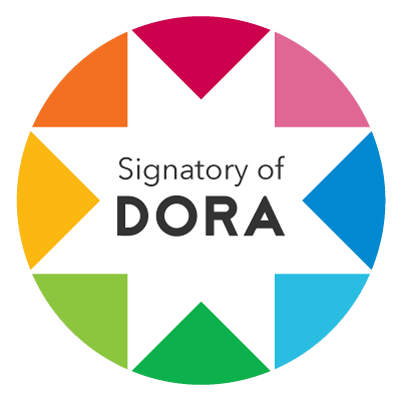Artistic Creation Research
ways to Progress in The Creative Act Knowledge
DOI:
https://doi.org/10.24215/24691488e095Keywords:
Artistic creation research, phenomenology, heuristics, methodological design, validity criteriaAbstract
Artistic creation research is a poorly identified type of research. On many occasions it is assimilated simply with the fact of making art itself, on other occasions it is integrated within the arts-based research approach. The article starts from this problem and delves into the meaning of artistic creation research, showing that the phenomenological and heuristic approaches are the most appropriate approaches to support artistic creation research. The article concludes by showing that research in artistic creation presents some methodological basics and validity criteria that make it different from the rest of the research in which a synergy between art and research is produced, being the most appropriate way of introspective inquiry to advance in the creative act knowledge.Downloads
References
Alvesson, M. y Sköldberg, K. (2005). Reflexive methodology [Metodología reflexiva]. Sage.
Benchop, R. (2020). A thought experiment on artistic research as high-risk ethnography [Un experimento mental sobre la investigación artística como etnografía de alto riesgo]. En H. Borgdorff, P. Peters y T. Princh (Eds.), Dialogues between artistic research and science and technology studies, [Diálogos entre la investigación artística y los estudios de ciencia y tecnología], pp. 46-61. Routledge.
Chang, H. (2008). Autoetnography as method [La autoetnografía como método]. Routledge.
De LaIglesia, J.F (2008). Ideología institucional y carácter auto-reflejo del arte. En J.F.
De la Iglesia, Rodríguez-Caeiro, M. y Fuentes-Cid, S. (Eds). Notas para una investigación artística, pp. 19- 19-32. Servicio de Publicaciones Universidad de Vigo. Descartes, R. (1977). The essential writtings [Escritos esenciales]. Harper & Row.
Dewey, J. (2005). Art as experience [El arte como experiencia]. Perigee Books. Douglas, B. y Moustakas, C. (1985). Heuristic inquiry. The internal search to know [Investigación heurística. La interna búsqueda de conocimiento]. Journal of Humanistic Psychology, 25(3), 39-55. https://doi.org/10.1177/0022167885253004
Eisner, E. (2008). Art and knowledge [Arte y conocimiento]. En Knowles, G. y Cole, A. (Eds.). Handbook of the arts in qualitative research [Manual de artes en investigación cualitativa]. (pp. 3-12). Sage.
Ellingson, L. (2009). Engaging crystallization in qualitative research: An introduction [Realizando cristalización en la investigación cualitativa]. Sage
Ellis, C. (1991). Sociological introspection and emotional experience [La introspección sociológica y la experiencia emocional]. Symbolic Interaction, 14(1), 23-50. https://doi. org/10.1525/si.1991.14.1.23
Ellis, C. y Adams, T. (2014). The purposes, practices, and principles of autoethnographic research [Los propósitos, practices, y principios de la investigación autoetnográfica]. En P. Nathan y P. Leavy (Eds). The Oxford Handbook of Qualitative Research [Manual de Oxford sobre Investigación Cualitativa], (pp.254-276). Oxford University Press.
King, N., Horrocks, C. y Brooks, J. (2019). Interviews in qualitative research [Entrevistas en la investigación cualitativa]. Sage.
Leavy, P. (2018a). Introduction to arts-based research [Introducción en la investigación basada en artes]. En P. Leavy (Ed.), Handbook of arts-based research [Manual de investigación basada en artes], 7-21. The Guilford Press.
Leavy, P. (2018b). Criteria for evaluating arts-based research [Criterios para evaluar la investigación basada en artes]. En P. Leavy (Ed.), Handbook of arts-based research, [Manual de investigación basada en artes], 575-586.The Guilford Press.
McNiff, S. (2008). Art-based research [Investigación basada en artes]. En Knowles, G. y Cole, A. (Eds.). Handbook of the arts in qualitative research [Manual de las artes en la investigación cualitativa], (pp. 29-40). Sage.
McNiff, S. (2018). Philosophical and practical foundations of artistic inquiry. Creating pradigms, methods, and presentations based in art [Fundamentos filosóficos y prácticos de la investigación artística. Creando paradigmas, métodos y presentaciones basadas en arte]. En Leavy, P. (Ed.), Handbook of arts-based research [Manual de investigación basada en arte], (pp. 22-36). The Guilford Press.
Moraza-Pérez, J.L. (2008). Aporías de la investigación en arte. Notas sobre el saboer. En J.F. De la Iglesia, Rodríguez-Caeiro, M. y Fuentes-Cid, S. (Eds). Notas para una investigación artística (pp. 35-71). Servicio de Publicaciones Universidad de Vigo.
Moustakas, C. (1990). Heuristic research. Design, methodology and applications [Investigación heurística. Diseño, metodología y aplicaciones]. Sage.
Moustakas, C. (1994). Phenomenological research methods [Métodos de investigación fenomenológica]. Sage.
Patton, M. Q. (2015). Qualitative research & evaluation methods [Investigación cualitativa y métodos de evaluación]. Sage
Rodríguez, R y Ryave, A. (2002). Systematic self-observation [Auto-observación sistemática]. Sage.
Strauss, A. y Corbin, J. (1998). Basic of qualitative research [Fundamentos de la investigación cualitativa]. Sage.
Van Manen, M. (1984). Practicing phenomenological writing [Practicando el escrito fenomenológico]. Phenomenology + Peagogy. 2(1), 36-69. https://doi.org/10.29173/ pandp14931
Van Manen, M. (2017). But is it phenomenology? [Pero esto es fenomenología]. Qualitative Health Research. 27(6), 775-779. https://doi.org/10.1177/10497323176995
Vera Cañizares, S. (2021). La investigación en creación artística. En B. Mazuecos
Sánchez y M. J. Cano Martínez (Coord.), Artes visuales y gestión del talento (pp. 12-26). Enredarts.
Downloads
Published
How to Cite
Issue
Section
License

This work is licensed under a Creative Commons Attribution-NonCommercial-ShareAlike 4.0 International License.
The acceptance of the manuscript by the magazine means the non-exclusive cession of the property rights of the authors in favour of the editor, who allows the reuse, after publication (post print), under a license Attribution-NonCommercial-NoDerivatives 4.0 International. According to these terms, the material can be copied and redistributed by any means or in any format as long as a) the author and original source of the publication are quoted (magazine and URL of the work), access to the license is provided and whether changes have been made is mentioned; and b) the material is not used for commercial purposes.
The cession of non-exclusive rights means that after the publication (post print) in Arte e Investigación the authors can publish their work in any language, means and format; in such cases it must be mentioned that the material was originally published in this magazine. Such cession also means the authorization of the authors for the work to be collected by SEDICI, the institutional archive of the National University of La Plata, and to be spread in the databases that the editorial team considers appropriate to increase the visibility of the publication and its authors.
Moreover, the magazine encourages the authors to deposit their productions in other institutional and thematic archives under the principle that offering the society the scientific and academic production without any restrictions contributes to a greater exchange of the global knowledge.


































